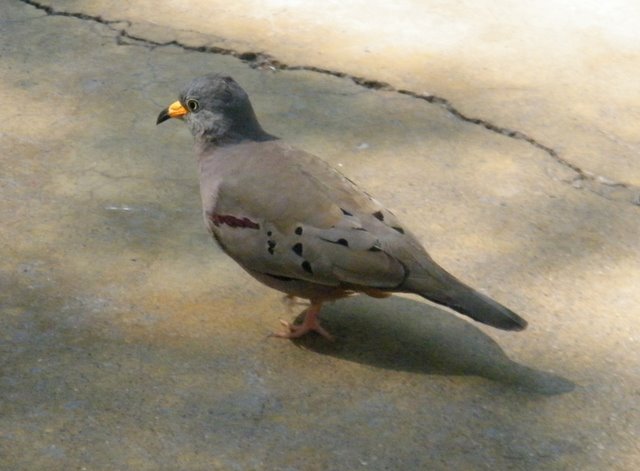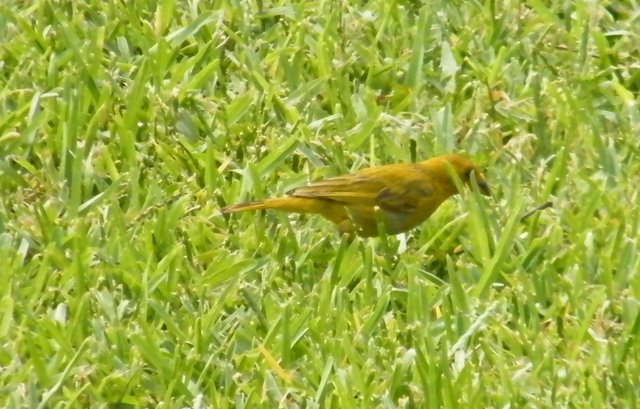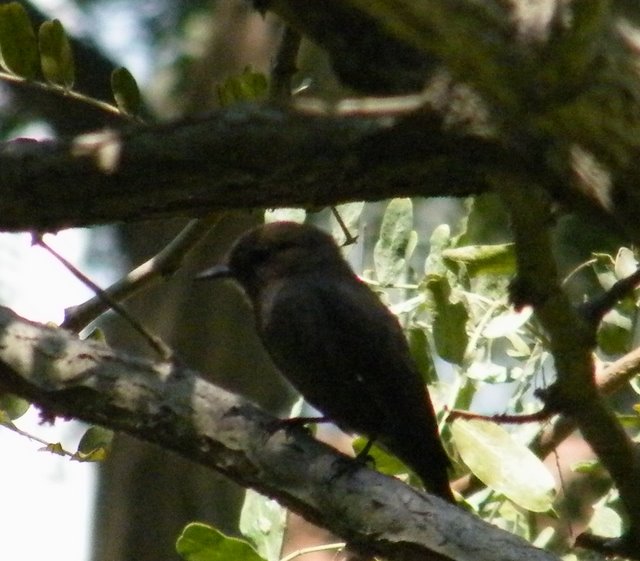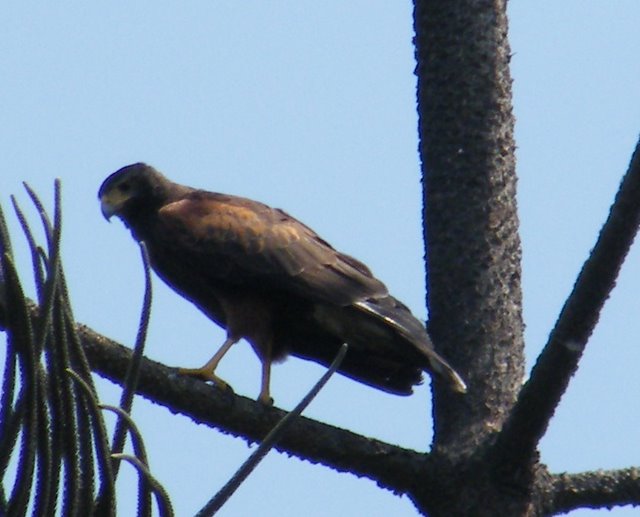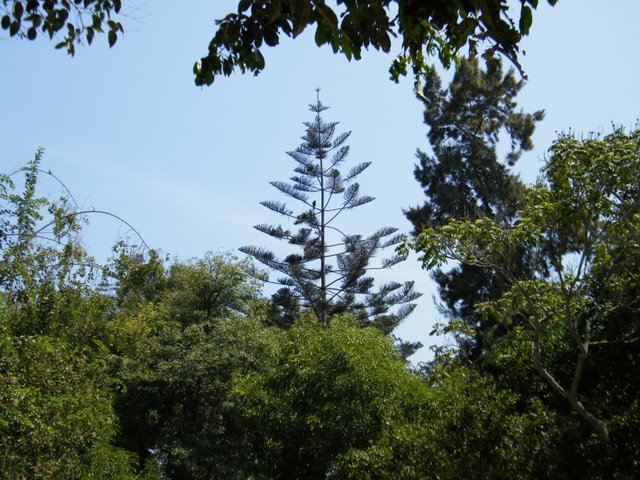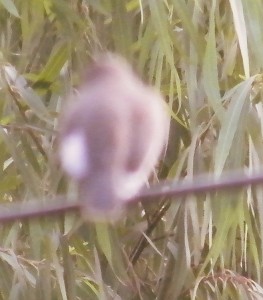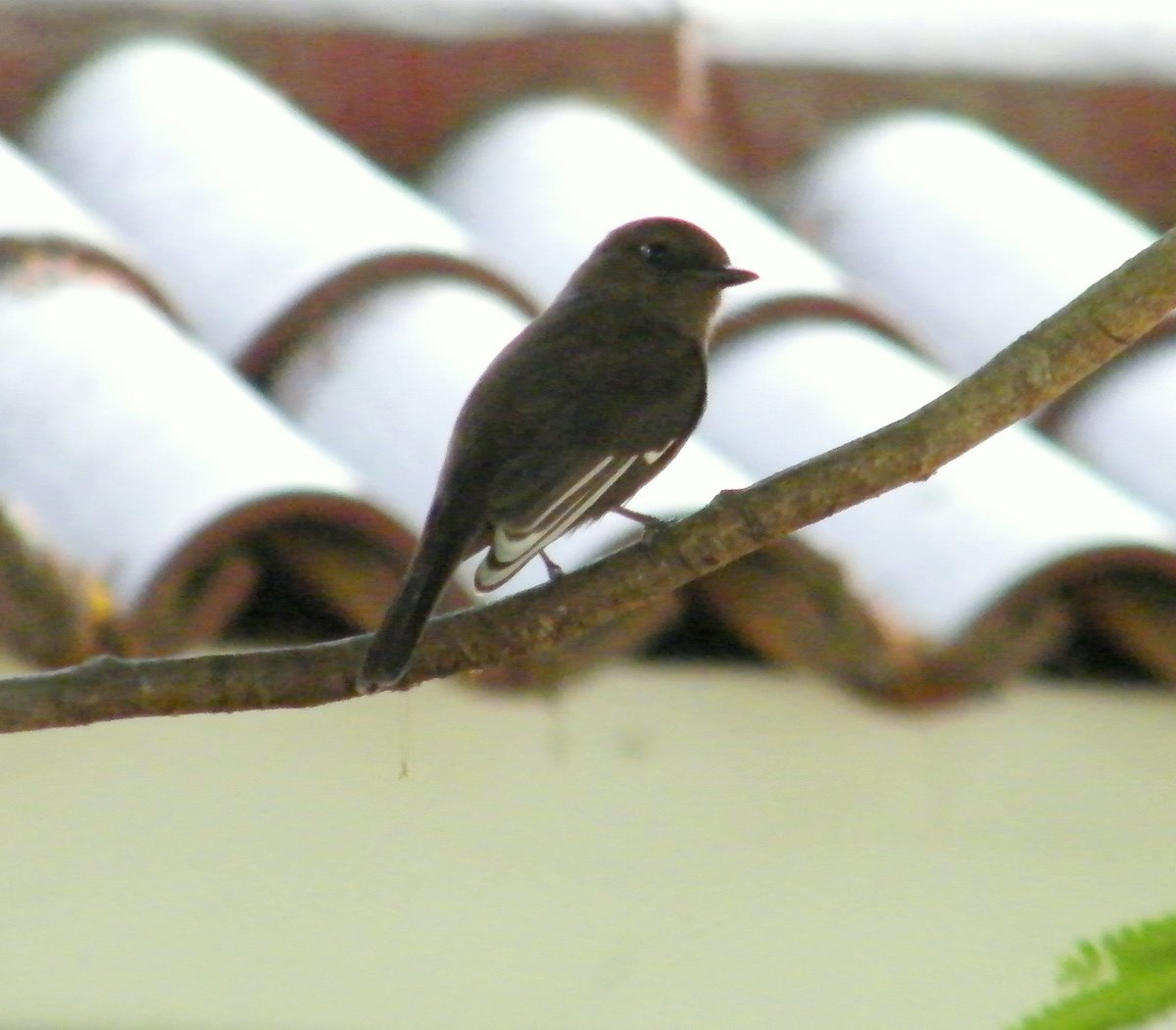April 2009
- I added a tool box with my social media posts and my best practical posts in the sidebar of my new blog lay-out. https://bit.ly/Nqjar #
- Probloggers blogging course part 2 https://bit.ly/303uVt Write a list! Did this task already. 10ways to avoid chiggers. https://bit.ly/25Qeo #
- RT @Maribelgns: “Former Peruvian president found guilty of rights abuses” (CNN.com) https://bit.ly/TZbKN Just to add a little more to story #
- It’s all clear to me now why I blog about birds & social media. More birds & More birders. Update & expanding the ideas, https://is.gd/rjtc #
- updates in the birding peru data base inserting 440 species our guide Alex Duran has recorded at Rio Amigos in 16 days https://is.gd/rttI #
Powered by Twitter Tools.

- New theme looks great now. And I made corrections and added more photos to Lima parks birding blog post. Check it out. https://bit.ly/z855 #
- Internet has been down for an hour. I might as well go to bed. Uh-uh, almost 3 AM should have been in bed long ago. #
- Ex Peruvian president Alberto Fujimori got sentenced 25 years of prison today for crimes againt human rights. Who is next? Bush? #
Powered by Twitter Tools.

Elevator pitch
 In my last blog post I resented somewhat that someone had classified my blog on Nature Blog Network as only blogging about Social Media and not enough about birds in Peru. Today, I get a chance to explain what my blog is all about. As mentioned in my blogpost about blogging for birders, I mentioned that Darren Rowse from Problogger started a 31 day course to better blogging yesterday.
In my last blog post I resented somewhat that someone had classified my blog on Nature Blog Network as only blogging about Social Media and not enough about birds in Peru. Today, I get a chance to explain what my blog is all about. As mentioned in my blogpost about blogging for birders, I mentioned that Darren Rowse from Problogger started a 31 day course to better blogging yesterday.
First asignment was to write an elevator pitch for the blog.
What is an Elevator Pitch?
“An elevator pitch is an overview of an idea for a product, service, or project. The name reflects the fact that an elevator pitch can be delivered in the time span of an elevator ride (for example, thirty seconds or 100-150 words).” – Wikipedia
Thus, I had to come up with something short that explained what my blog is all about and why all this stuff about social media in a blog that supposedly is about birds could actually make some sense.
When I started blogging on this site, I did not know that social media was going to be part of my blog theme, since I knew very little about it. However, it soon became clear to me that I needed to learn about social media to reach out with my blog and that birders in general had scant knowledge about the possibilities. A niche was born for me.
So here is my elaborated Elevator pitch for my blog. After 4 months of blogging I can finally tell you what my blog is all about.
More Birds for More Birders through the use of Social Media and Technology
More Birds – is the first business mantra of my bird tour company Kolibri Expeditions. (The other mantra is: Why see less? Why pay more? )
My blog is both to let the readers learn about More Birds as well as improving the birding experience and birding skills through technology and social media such as blogging, Facebook, Twitter, online-databases, forums and online picture sharing. Through social media and technology more birders can be reached, but it is also hoped that it will create more birders.
It covers aspects of:
- Networking for birders
- Digital photography
- Conservation of threatened birds
- How to become a birdwatcher and natureblogger
- Birding with Kids
- Listing
- Rare birds and conservation
- Birding tours
Keywords: More bird & More birders
Let me expand a little on these keywords.
- More birds: What it comes down to, is that all of us birders want to see more birds, be that in species or large congregations or extended time in the field. The social media and the technology allows us to be connected with nature in an unprecedented way that was not possible only a few years ago. The possiblities are limitless ranging from finding birding trip partners, getting way descriptions to rare birds, share birdphotos or recordings, promote a birding locality or birding event, etc, etc.
- More birders: Birders are well aware that numbers count. More birders, mean more people caring for habitat conservation. More birders mean that globally threatened species in remote areas get a higher value as birders want to see them, leading both to revenues for conservation as well as economic incentives to local communities who will be caretakers of a valuable patrimony rather than a threat to the same. By using social media and technology that the younger generation already master the numbers of young and older birdwatchers shall increase.
So it all ties together very well in the end. It is my master plan for my blog, which I hope at the end of the day will make some difference. Anyway, without making myself come off like as a self-inflated prick (I just did, didn’t I?), I feel I have a mission with this blog and something to tell which should interest you. And that was the purpose of today’s asignement. Now, if you enter NatureblogNetwork and make some nice comments about this approach, you will really make my day. (I’ll explode!)

- HELP! Problems with blog lay out. Tried changing theme. Looked good first, but must have done s-thng. https://bit.ly/GL1fJ What is wrong? #
- Did WP 2.6.5 just bust? https://bit.ly/GL1fJ What couldve done to make every theme look crazy. Going 2 bed now, hoping form miracle tomorrow #
- Themes screwed up. New blog post on new theme https://bit.ly/z855 Where are my sidebars? Should be like this https://bit.ly/18WV What I done? #
Powered by Twitter Tools.

Who says I only do Social Media on my blog? Carajo!
Maybe someone who actually regularly reads my blog can enter a vote and write a review for this blog on Nature Blog Network. I got a grade 2 of 5. I haven’t done so poorly in any task since I got a 2 (Swedish 5 grade mark system in schools) in 2nd grade primary school at age 8 in Christianity, cause I did not like that the teacher made the fairy tales told sound like it was the truth! (Christianity later became Religion studies – an overview of all the worlds religions – in which I did very well), Anyway, my pride has been hurt and I am set to bore my readers with some extremely common birds in the Lima parks in this post just to put the birds of Peru back into the blog. It will be sort of a follow-up to my previous two posts on preferring digital camera instead binoculars for a beginner birder
Scenario: I am pretending to be a newbie birder who has just got my first point and shoot camera – a Fujifilm FinePix S2000HD 10MP Digital Camera with 15x Optical Dual Image Stabilized Zoom. The cost of the camera is 239 US$. I am hitting the parks in Lima to photograph some birds, with my daughter Luciana, who loves birds.
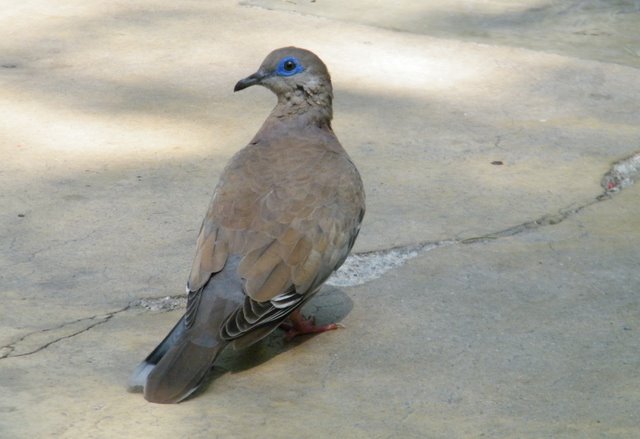
Pacific Dove - aka as West Peruvian Dove. This Luciana knows well. Cuculí is the onamatepoeic name in Peru
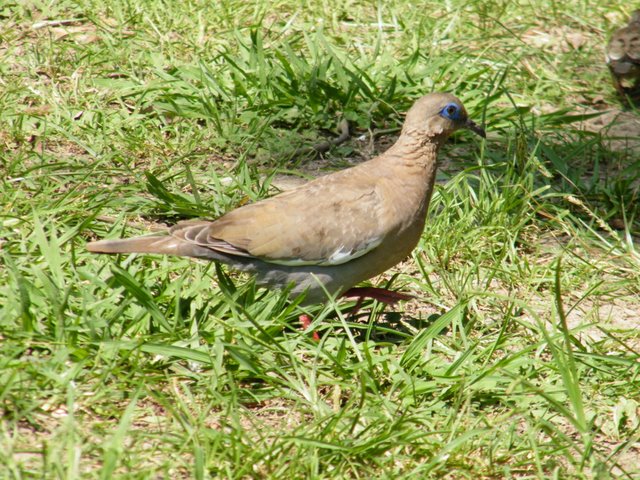
Pacific Dove. I show this on the screen on the camera after I have taken the shot, and Luciana knows immediately that it is Cuculí. Would not be able to do that with binoculars.

Scrub Blackbird - note longer stronger bill and longer tail compared to Shiny Cowbird and no purple sheen.
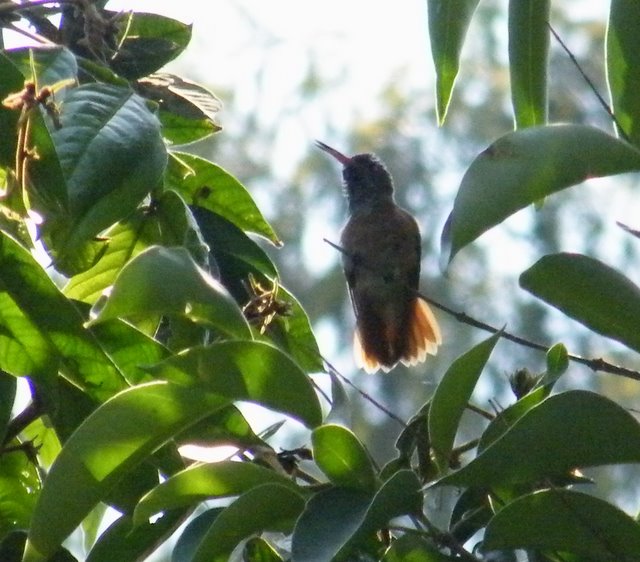
Amazilia Hummingbird - very distant and difficult condition to get good picture. Easily identified on the red tail and the red ill.

- Would you be able to identify this bird from a description only? What is best bins or camera? New blog https://bit.ly/SrXV pls RT #
- Hip hip hurrey, our favorite Spanish bistro in Lima Manolo’s is now totally smoke-free since a new law 2 months ago. Churros con chocolate! #
- “JJMurphy Thanks, Only took 24 h to get well. It was related to extraction of a tooth. #
- OMG Green man from Mars on Twitter feed. Wait a minute! It’s the new @Scobleizer avatar. That should scare off some followers! Re-tweet?? #
- What is best for the neophyte birder with out an expert at his side – binoculars or camera? New blog https://bit.ly/SrXV pls RT #
Powered by Twitter Tools.

Birding Peru 2004 video clips – part 2
The first part of these clips can be found here. Here is the second delivery of Keith Blomerly’s videos from the trip he did with Kolibri Expeditions in 2004 together with Simon Wotton, Richard Winspear and Guy Shorrock. These videos cover principally the Manu road and the lowlands. The birds species seen are mentioned in order. There are quite a few butterflies filmed as well if someone want to have a go identifying them.
Manu road, Pillahuata, Rocotal and Cock-of-the-Rock Lodge
Spectacular birding on the Manu road to Cock-of-the Rock Lodge with birds showing in this order Saffron-crowned Tanager, Cinnamon Flycatcher, Golden-headed Quetzal, Woolly Monkey, Highland Motmot, Blue-banded Toucanet and Versicolored Barbet, Brown Capuchin, female Wire-crested Thorntail, Russet-backed Oropendola, Andean cock-of-the-rock, Dusky-green Oropendola, White-bellied woodstar, Wire-crested Thorntail, White-bellied Woodstar, Variable Antshrike and Hooded Tinamou.
Cock of the Rock Lodge and Manu Amazon Lodge. Blanquillo Macwa lick.
Starting at Cock-of-the-rock Lodge on the Manu Road via Quitacalzones Bridge to Atalaya. Here a boat took us to Pantiacolla Lodge. From Pantiacolla the trip went on to Manu Amazon Lodge (formerly known as Manu Camping Lodge). A visit to the famous Macawlick is the final highlight of this section.
Species in chronological order Violaceous Jay, Lanceolated Monklet and Plumbeous Kite, Yellow-browed Tody-Flycatcher, Red Howler Monkey, White-browed Antbird, Squirrel Monkey, a brief view of a probable Yellow-breasted Warbling Antbird (collinsi form), White-winged Trumpeter, Wood Stork, Horned Screamer, Sand-coloured Nighthawk, Scarlet Macaw, Blue-headed Parrot, Orange-cheeked Parrots Mealy Parrot and Red-and-Green Macaw.
Manu Amazon Lodge, canopy Tower at Cocha Camungo and Cocha Camungo catamaran canoe trip.
First some birding near the lodge and then on to the Cocha Camungo area with canopy tower and lake. In the afternoon birding is near Manu Amazon Lodge.
Saddle-backed Tamarin, Striolated puffbird, Greater Yellow-headed Vulture, Squirrel cuckoo, Purus Jacamar, Yellow-rumped Cacique, Neotropic cormorant, Sungrebe in flight, Greater Ani, Boat-billed Flycatcher, Striated Heron, Black-capped Donacobius, Squirrel, Llesser Kiskadee, Hoatzin, Amazon kingfisher, Blue-and-yellow macaw, Crested Owl, Razor-billed Curassow and female Plumbeous Antbird duetting with a male.
Cocha Blanco Lake Catamaran Canoes.
Mainly Cocha Blanco and Manu Amazon Lodge.
Birds filmed are Wattled Jacana, Amazon Kingfisher, Green Kingfisher, Ringed Kingfisher, Black-collared Hawk, Swallow-tailed Kite, Muscovy Duck, Least Grebe, Horned Screamer, Limpkin, Squirrel Monkey, Giant Otter, Amazonian Antwren, Sunbittern, Sungrebe, Ladder-tailed Nightjar, Red-necked Woodpecker, Dwarf Tyrant-Manakin and Undulated Tinamou, Black-fronted Nunbird, White-flanked Antwren, Spectacled Owl and Southern Chestnut-tailed Antbird.
The remaining 5 video clips by Keith Blomerley from the Kolibri Expeditions Manu trip in 2004 will be posted shortly on this blog. Stay tuned. Want to visit Manu. Check out our Manu page and the calendar. There are many different trip options at different prices depending on comfort level, time available and specific interest.

The camera never lies
In spite that a description of a bird seen by a beginner is no better than this out of focus photograph, I seem to have a hard time to get my mind across to the experienced birder with my recent blog post “How to become birdwatcher in the 21st century“, in which I promote beginner birders to choose a camera and internet connection before binoculars, pad and field guide.
– Nah, nothing beats binoculars – I would not trade them for a camera. You’re not really a birdwatcher unless you have binoculars!
That is the voice of the veterans, while several birding neophytes have admited on this blog that it was exactly the possiblity to photograph the birds and then find out what they were, that got them into birding in the first place. Digital photography is revolutionizing for nature studies. Three years ago, I set up a butterfly-watching trip for Kim Garret and her friends in Central Peru. I was imagining that I was in for a group of geeks running around with butterfly nets and cold-boxes to get them into study position. Much to my surprise, no geeks at all! They used digital cameras with large aperture lenses and good macro funtions and tried to photograph as many as they possibly could during their nature watching holiday in Peru. They sometimes did not have clue what they were looking at, but had ways to identify the butterflies back home going through all sort of literature and sending pictures to museums and collectors that maybe could help out with the identification. This way they could be re-living the trip for several months. This was my first exposure to this technique. I was fascinated, even though I did not think for a moment that the same technique could be applied to birding and new birders.
In many senses these quite experienced butterfly-watchers went through the same stage as a beginner birder. Many of the butterflies they photographed were completely new to them and there is no representative field guide to the butterflies of Peru. So they were almost as neophytes in Peruvian butterflies as a beginner birder would period. Since then I have recently come to realize that the photos in birding makes the difference.
Can you identify this bird:
Three weeks ago, I went to a park in La Molina in Lima in search
for a White-crested Elaenia, which had been reported earlier in the week, but unfortunately could not be found again. Instead we saw a mystery bird!
Had a beginner birdwatcher tried to explain what he had seen very well in the city park – he would have said.
It was a small all black bird with lots of white in the wings.
The only bird in Lima that is completely black with with in the wings would be a Blue-black Grasquit, except that the white is only the under wing-coverts and only obvious in flight if you catch glimpses of the underwing. Furthermore, the local ssp of Blue-black Grassquit seems never to become completely black, but retains some brown feathers in the plumage even as adults.
Partially albinistic melanistic form of Vermilion Flycatcher
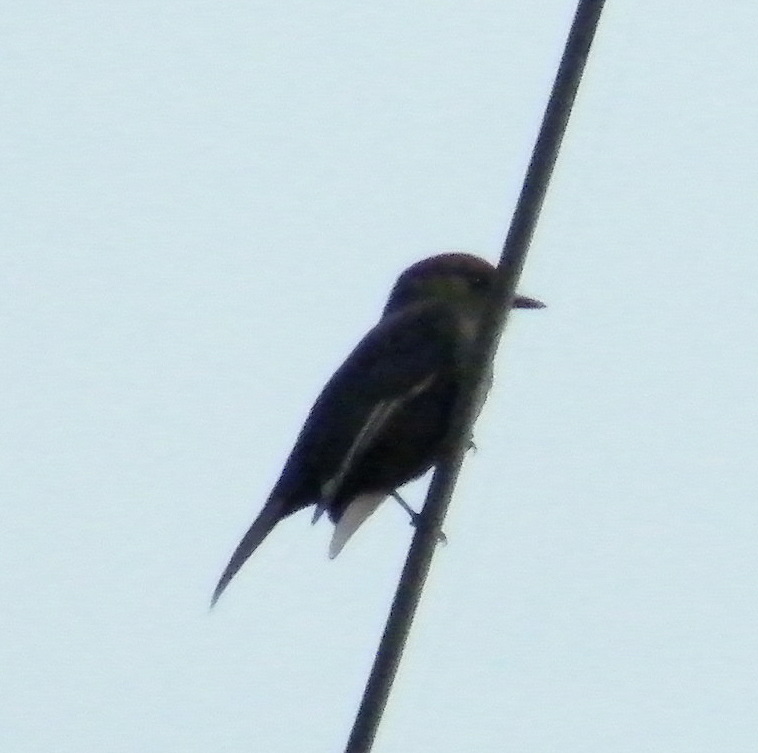
Partially albinistic melanistic morf of Vermilion Flycatcher - note the symetrical white primaries on both wings!
The melanistic form of Vermilion Flycatcher is very common in Lima city. I have sometimes seen individuals with one or two white feathers in the plumage, but this it the first time I have seen something this symmetrical.
So hand on the heart experienced birders, would you have identified this bird only on the description? Pretty hopeless for the beginner birders, when birds like this occur in a Lima park – surely he would not find it in the book.
Photos all taken with Fuji Finepix S2000 10 MP 15x zoom, which costs less than 200 US$. Now you tell me. Camera or binoculars for the beginner birder?

- New issue of I and the Bird. Charles Darwin and Edgar Allen Poe conversing over a couple of beers with the Great Auk https://bit.ly/tB2G1 #
Powered by Twitter Tools.


